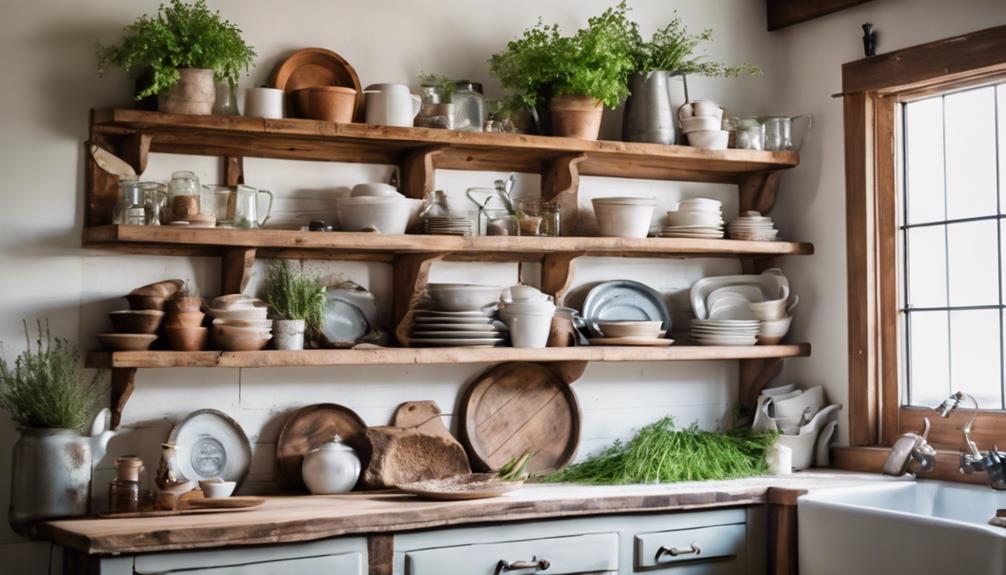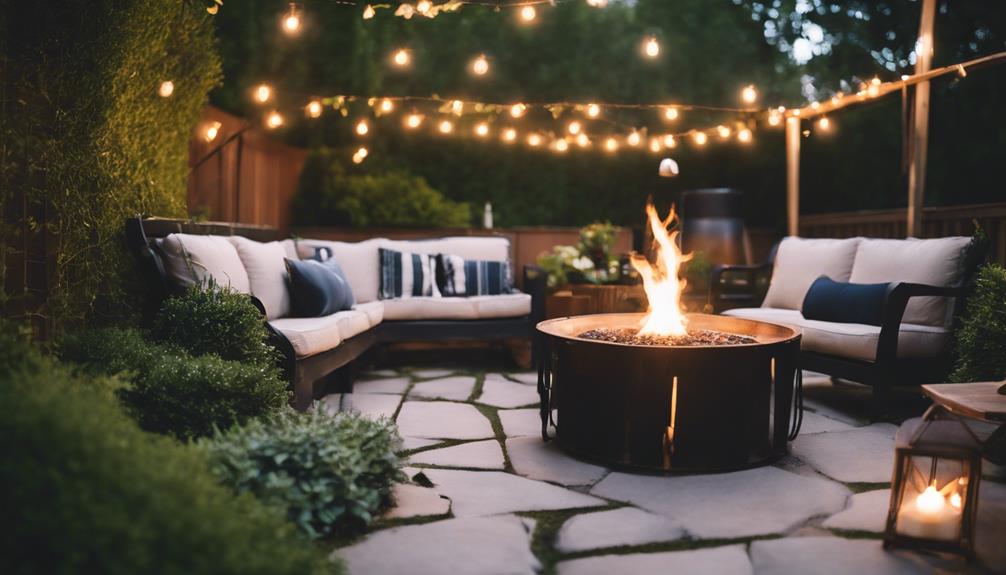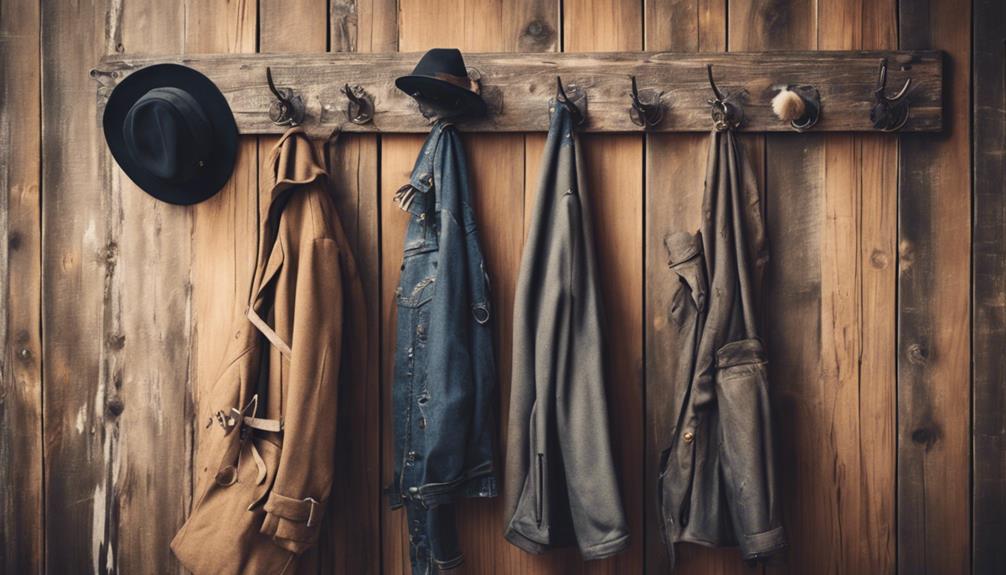Get ready to discover the cream of the crop with our top 5 picks from Home Imagined Link Party 10. From a cozy winter porch refresh to charming DIY Valentine's Day crafts, these projects will jazz up your home decor instantly. Whether you're looking to set a romantic table or create a snug living room retreat, these standout ideas have got you covered. And if you're into farmhouse vibes or boho chic styles, we've got just the thing for you. Stay tuned to uncover more fabulous projects that will spark your creativity and elevate your living spaces.
Key Takeaways
- Winter Porch Refresh with evergreen wreaths and cozy blankets.
- DIY Valentine's Day Crafts like handmade cards and heart wreaths.
- Table Decor Romance with candles, flowers, and personalized touches.
- Cozy Living Room Updates with throw blankets and soft lighting.
- Farmhouse Kitchen Inspiration featuring rustic elements and modern functionality.
Winter Porch Refresh
When planning a winter porch refresh, we aim to update our outdoor space with seasonal decor and plants to create a cozy and inviting atmosphere during the colder months.
Adding touches of winter charm to our outdoor space through elements like evergreen wreaths, cozy blankets, and lanterns can transform our porch into a welcoming retreat.
By incorporating pops of color with seasonal flowers or berries, we can brighten up the porch and enhance its visual appeal.
Using weather-resistant materials such as faux fur and metal accents guarantees that our winter porch decor can withstand the elements, maintaining its beauty throughout the season.
This simple and budget-friendly update not only refreshes our outdoor space but also creates a warm and welcoming entryway for guests.
Embracing the spirit of the season through thoughtful home decor choices can make our porch a delightful extension of our living space during the winter months.
DIY Valentine's Day Crafts

Let's explore creative and festive DIY Valentine's Day crafts to add a personal touch to your home decor. Crafting for Valentine's Day can be a fun way to express your creativity and spread love to those around you. When making these crafts, feel free to experiment with different materials and techniques to create unique pieces that reflect your style.
Here are some ideas to get you started:
- Handmade Valentine's Day Cards: Use colorful paper, stickers, and markers to create custom cards for your loved ones. Personalize each card with heartfelt messages to show how much you care.
- Heart-Shaped Wreath: Make a decorative wreath using fabric or paper hearts. You can hang this on your front door or inside your home to add a festive touch to your Valentine's Day decorations.
- Love-themed Mason Jars: Transform ordinary mason jars into charming candle holders or vases by painting them in romantic colors and adding embellishments like ribbons or lace. These make lovely gifts or table centerpieces for a romantic dinner.
When trying out these projects, come back to add your own creative flair, and make sure to enjoy the process of crafting for this special occasion.
Table Decor Romance

Exploring table decor romance for Valentine's Day can set the mood for a festive and intimate celebration in your home. By incorporating elements such as candles, flowers, and heart-shaped decorations, you can enhance the romantic ambiance of your table setting.
The use of red, pink, and white colors can further evoke the spirit of Valentine's Day, adding a touch of love to the atmosphere. DIY projects like handmade place cards or centerpieces offer a personalized flair to your table decor, making the occasion even more special.
For a charming and intimate setting, consider incorporating vintage or rustic elements into your Valentine's Day table decor. These elements can add a timeless and cozy feel to the space, creating a perfect backdrop for a romantic evening with your loved one.
With thoughtful consideration and attention to detail, your table decor can set the stage for a memorable Valentine's Day celebration at home.
Cozy Living Room Updates

We can enhance the coziness of a living room by incorporating warm, soft throw blankets and plush pillows. These items instantly add a touch of comfort and coziness to your living room, inviting you to snuggle up and relax.
Lighting fixtures play an important role in creating a cozy ambiance, especially when updated to include soft, warm tones. Upgrading your lighting to emit softer, warmer hues can contribute significantly to the overall cozy atmosphere of the room.
Additionally, adding a plush area rug can't only define the space but also add a layer of warmth to the room. A plush rug not only adds a cozy texture underfoot but also helps to anchor the seating area, making it feel more inviting and snug.
Farmhouse Kitchen Inspiration

Farmhouse kitchens exude a charming blend of rustic elements and modern functionality, creating a warm and inviting space for culinary creativity. Typically, these kitchens embrace rustic features like open shelving, reclaimed wood, and vintage decor to evoke a cozy, lived-in feel.
Neutral color palettes, such as whites, grays, and natural wood tones, are commonly chosen to enhance the farmhouse ambiance.
Key elements often found in farmhouse kitchens include farmhouse sinks, butcher block countertops, and subway tile backsplashes, adding to the classic charm. To bring a touch of nature indoors, many homeowners opt to incorporate greenery like potted herbs or succulents, infusing the space with freshness and warmth.
For a harmonious blend of old and new, integrating modern appliances alongside traditional farmhouse elements is a popular choice. This mix creates a balanced and functional kitchen that combines the best of both worlds, offering convenience without sacrificing the farmhouse aesthetic.
Minimalist Bedroom Makeover

Moving from the cozy charm of a farmhouse kitchen, let's now shift our focus to the serene transformation of a minimalist bedroom makeover.
In a minimalist bedroom makeover, the emphasis lies on decluttering and simplifying the space to cultivate a clean and tranquil environment. To achieve this minimalist aesthetic, neutral colors, minimal furniture, and simple decor pieces are carefully selected.
The ultimate goal is to craft a peaceful and relaxing atmosphere that promotes rest and rejuvenation.
- Key Elements of a Minimalist Bedroom Makeover:
- Decluttering and simplifying the space
- Choosing neutral colors and minimal furniture
- Incorporating storage solutions like hidden compartments
Boho Chic Bathroom Revamp

Transform your bathroom into a boho chic oasis by incorporating eclectic patterns, natural textures, and vibrant colors. To achieve the bohemian aesthetic, consider adding elements like rattan furniture, macramé wall hangings, and an assortment of plants.
Mixing and matching different patterns and textures can help create a visually alluring and cozy space. Consider incorporating vintage or handmade pieces to add a personalized touch that enhances the overall boho vibe of the bathroom.
Embrace a relaxed and carefree atmosphere by infusing your bathroom with boho chic design elements. By blending these key components, you can revamp your bathroom into a stylish sanctuary that exudes a free-spirited and eclectic charm.
Whether it's through the use of unique patterns, natural materials, or vibrant hues, each element plays an essential role in transforming your bathroom into a boho chic retreat that's both inviting and visually appealing.
Outdoor Oasis Transformation

Looking to spruce up your outdoor space? Consider giving your patio furniture a refresh, tackling a DIY garden makeover, or upgrading your poolside lounge.
These simple projects can transform your outdoor oasis into a cozy and inviting retreat where you can relax and unwind.
Get ready to enhance your outdoor living area with creative ideas that bring a touch of nature into your surroundings.
Patio Furniture Refresh
To revamp our outdoor oasis, let's explore ways to refresh our patio furniture. Here are some tips to give your outdoor seating area a fresh new look:
- Paint Makeover: Consider giving your old patio furniture a facelift with a coat of weather-resistant paint. Choose a color that complements your outdoor decor scheme for a cohesive look.
- Cushion Upgrade: Update the cushions on your patio chairs and loungers to add comfort and style. Opt for durable, fade-resistant fabrics that can withstand outdoor elements.
- Accessorize Affordably: Enhance the visual appeal of your outdoor space by adding budget-friendly accessories like outdoor rugs, throw pillows, and decorative lanterns. These simple additions can elevate the overall ambiance without breaking the bank.
DIY Garden Makeover
Revamping our outdoor oasis with a DIY garden makeover can breathe new life into our surroundings and create a personalized retreat. This transformation not only enhances the aesthetic appeal of our outdoor space but also adds value to our property while providing a tranquil sanctuary.
DIY garden makeovers offer a cost-effective way to tailor the design to our preferences and needs. By incorporating elements such as seating areas, water features, and thoughtful landscaping, we can elevate the beauty and functionality of our garden. Upcycling old furniture or utilizing repurposed materials can infuse charm and character into our outdoor oasis, making it a unique and inviting space.
It's crucial to plan meticulously and regularly maintain our DIY garden makeover to guarantee its longevity and continued allure. With careful attention to detail and creativity, our outdoor oasis can become a cherished retreat that brings joy for years to come.
Poolside Lounge Upgrade
How can we elevate our outdoor oasis with a poolside lounge upgrade that combines comfort and style for a rejuvenating retreat?
Our upgraded poolside lounge area boasts new furniture, decor, and landscaping, transforming it into a complete outdoor oasis. The incorporation of comfortable seating, stylish accents, and a strategic layout creates a relaxing and inviting space for all to enjoy.
To enhance comfort and enjoyment in the outdoor lounge area, shade options like umbrellas or pergolas have been added. Additionally, lighting elements have been integrated to provide evening ambiance and functionality in the poolside lounge space.
The transformation of the poolside area into a beautiful and functional outdoor retreat ensures that it serves as a perfect spot for relaxation and entertaining. With these enhancements, our poolside lounge has become a haven where we can unwind, socialize, and bask in the beauty of our outdoor sanctuary.
Eclectic Home Office Redesign

We explore the color scheme selection and functional layout design of an eclectic home office redesign.
The mix of bold colors, patterns, and textures creates a visually stimulating environment.
Functional storage solutions, like open shelving and stylish containers, keep the space organized and efficient.
Color Scheme Selection
When selecting a color scheme for an eclectic home office redesign, it's important to take into account the existing furniture and decor in the room. To achieve a cohesive and visually appealing look, consider the following:
- Complementing Color Palette: Choose a mix of bold and neutral tones that harmonize with the overall style and theme of the space. This balance can create a dynamic yet cohesive atmosphere.
- Texture and Pattern Experimentation: Incorporate different textures and patterns within the chosen color scheme to add depth and visual interest to the room. This can prevent the space from feeling flat or one-dimensional.
- Pops of Color Through Accessories: Introduce pops of color through accessories like throw pillows, rugs, and artwork. These accents can tie the color scheme together and inject personality into the design.
Functional Layout Design
In designing our eclectic home office redesign, we prioritized creating a functional layout that optimized productivity and organization. By strategically placing storage solutions like shelving units and file cabinets, we maximized the space for work tasks.
The mix of furniture styles and decor elements not only added a unique and personalized look but also contributed to a productive atmosphere. Utilizing a neutral color palette with splashes of vibrant hues brought creativity and visual interest to the workspace without guaranteeing the design.
Ergonomic furniture choices, such as a comfortable chair and proper lighting, were integrated to enhance functionality and comfort in the home office. The layout was carefully planned to make sure easy access to essential items and a smooth workflow.
Rustic Dining Room Renovation

Amidst the Home Imagined Link Party 10 features, the rustic dining room renovation captivates with its blend of natural elements and vintage charm. The project showcases how simple changes can completely transform a space. By adding rustic elements such as reclaimed wood, distressed finishes, and earthy tones, a cozy and inviting dining area is created.
Mixing textures like stone, metal, and wood adds depth and character to the room, elevating its overall aesthetic. The renovation serves as inspiration for those seeking to design a warm and welcoming space with a touch of farmhouse charm.
To achieve a similar rustic dining room renovation, consider the following:
- Incorporate reclaimed wood elements for a natural and authentic look.
- Opt for distressed finishes to add a weathered and aged appearance.
- Use earthy tones and textures like stone and metal to enhance the cozy atmosphere.
Frequently Asked Questions
How Can I Incorporate Sustainable Materials Into My DIY Projects?
Incorporating sustainable materials into DIY projects is a great way to be eco-friendly. Start by researching eco-friendly options like bamboo, reclaimed wood, or recycled glass.
Look for local suppliers to reduce transportation emissions. Consider repurposing items you already have or shop at thrift stores for materials.
Reduce waste by planning your projects carefully and recycling any leftover materials. By making these choices, we can all contribute to a greener future.
What Are Some Cost-Effective Ways to Update My Living Room Decor?
Updating your living room decor on a budget can be achieved through simple yet impactful changes. Consider painting an accent wall, swapping out throw pillows, or rearranging furniture for a fresh look.
DIY projects like creating artwork or refinishing furniture can also add a personalized touch without breaking the bank.
Thrift stores, online marketplaces, and discount home goods stores are great places to find affordable decor items.
Can You Suggest Storage Solutions for Small Farmhouse Kitchens?
In small farmhouse kitchens, we recommend utilizing vertical space with wall-mounted shelves or racks for pots, pans, and utensils. Installing hooks under cabinets or on walls can also help hang mugs, cooking tools, or towels.
Consider using baskets or bins on open shelves to corral smaller items like spices or snacks. For additional storage, a rolling cart or trolley can provide flexibility while keeping clutter at bay.
Don't forget to maximize cabinet space with organizers and stackable containers.
How Can I Add a Touch of Luxury to a Minimalist Bedroom?
To add a touch of luxury to a minimalist bedroom, consider incorporating plush textures like velvet or faux fur for throw blankets or accent pillows.
Opt for a statement lighting fixture or elegant bedside lamps to create ambiance.
Adding a pop of color through artwork or decorative accessories can also elevate the space.
What Are Some Creative Ways to Bring Nature Indoors in a Boho Chic Bathroom?
To bring nature indoors in a boho chic bathroom, consider adding live plants like air plants, ferns, or succulents.
Incorporate natural materials such as wood accents, rattan baskets, or jute rugs.
Use earthy colors like greens and browns for a calming feel.
Hang macrame plant hangers or woven baskets for a bohemian touch.
Opt for botanical prints or nature-inspired artwork to enhance the theme.
These simple additions can create a tranquil oasis in your bathroom.
Conclusion
To sum up, the top 5 projects from the home imagined link party showcase a range of creative ideas to refresh and revamp your living spaces. From cozy living room updates to rustic dining room renovations, there's something for every style and budget.
So whether you're looking for a simple DIY project or a complete room transformation, these projects offer inspiration and practical tips to help you create a home you love. Let your imagination run wild and turn your house into a welcoming oasis.










